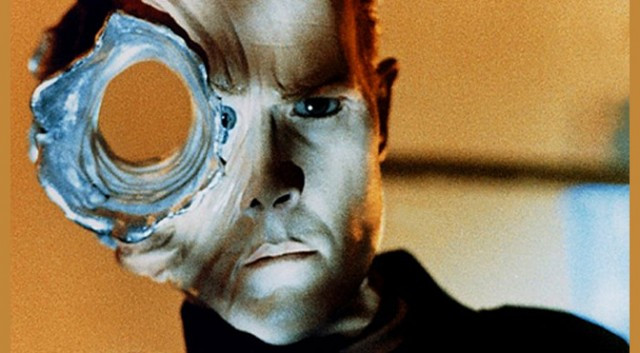Robots programmed to recover from injury in minutes and adapt movements using Darwinian software

While the self-healing abilities of the T1000 robot in Terminator are still a figment of the imagination, French and US scientists have found a way to help robots adapt within minutes when they are injured.
Researchers from the Pierre and Marie Curie University in France and the University of Wyoming in the US have developed software that enables robots to realise that they have been damaged, take stock and then compensate for the injury and find new ways to work around it.
At the moment, robots are able to complete tasks successfully, but if they are injured in the process, the robots tend to keep trying to work the way they had before becoming injured, which often just makes the problem much worse.
So the researchers decided to develop the Intelligent Trial and Error algorithm. Before the robot starts work, it can use a computer simulation of itself to create a detailed map of its "intuitions" of what behaviours it can perform, and assign these behaviours a value, using an evolutionary algorithm called MAP-Elites that simulates Darwinian evolution.
Adapting to damage and inventing new behaviours

When the robot is damaged, it then uses the algorithm to conduct experiments in order to find compensatory behaviour it can perform that has the same value as the behaviour lost through the injury.
"Once damaged, the robot becomes like a scientist. It has prior expectations about different behaviours that might work, and begins testing them," said lead author Antoine Cully, a PHD student in control systems engineering at Pierre and Marie Curie University.
"However, these predictions come from the simulated, undamaged robot. It has to find out which of them work, not only in reality, but given the damage."
The algorithm is inspired by the biological ability of animals to find a way to move even when they are injured, and similarly, the robot can invent new behaviours it wasn't originally programmed with.
Creating killer robots or better helpers?
"Each behaviour it tries is like an experiment and, if one behaviour doesn't work, the robot is smart enough to rule out that entire type of behaviour and try a new type," Cully explained.
"For example, if walking, mostly on its hind legs, does not work well, it will next try walking mostly on its front legs. What's surprising is how quickly it can learn a new way to walk. It's amazing to watch a robot go from crippled and flailing around to efficiently limping away in about two minutes."
While the creation of this software might be frightening to some as it means autonomous robots can become more robust and effective, and therefore less easy to kill if they decide to take over the world, the scientists say it has some great benefits for the present.
"It could enable the creation of robots that can help rescuers without requiring their continuous attention," stressed Cully. "It also makes easier the creation of personal robotic assistants that can continue to be helpful even when a part is broken."
The research, entitled "Robots that can adapt like animals" is published in the journal Nature.
© Copyright IBTimes 2025. All rights reserved.





















